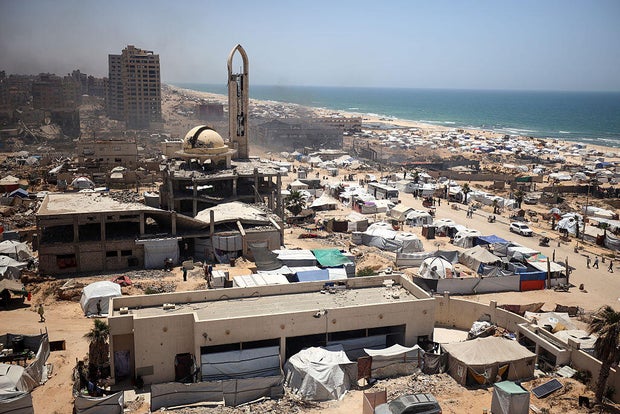Aid Trucks to Gaza: A Desperate Response to an Ongoing Crisis
The recent influx of aid trucks into Gaza is, as the Executive Director of the U.N. World Food Program (WFP), Cindy McCain, aptly stated, a mere "drop in the bucket" in addressing the dire humanitarian situation facing the region. The sharp words of McCain resonate deeply with the crisis currently overwhelming the lives of 2.3 million Palestinians, many of whom are teetering on the brink of famine.
The Reality on the Ground
A Catastrophic Situation
McCain conveyed the urgent need for adequate food supplies during her interview on “Face the Nation.” She revealed that 500,000 individuals are suffering from extreme food insecurity, with no relief in sight unless substantial aid flows into Gaza.
“We need to get in, and we need to get in at scale,” McCain emphasized.
The alarming increase in aid trucks allowed into the region—an estimated 600 per day during a previous ceasefire—has plummeted to a paltry 100 trucks daily. The lack of sufficient resources is not only frustrating but life-threatening, with McCain noting, "It’s not nearly enough."

People commute along the al-Rashid road, the only route linking the northern and southern parts of the Palestinian territory, on May 25, 2025.
Credit: Majdi Fathi/NurPhoto via Getty Images
The Human Toll of the Blockade
Israeli Offensive and its Aftermath
Following Israel’s ceasefire expiration in March, the continued military action has significantly exacerbated the humanitarian crisis. Israel’s Prime Minister, Benjamin Netanyahu, asserts that such actions aim to weaken Hamas and secure the release of hostages from the Oct. 7, 2023 attacks.
The situation worsened as the blockade prevented the importation of essential resources—including food, medicine, and fuel—for more than two and a half months. The gradual allowance of aid trucks only came after mounting pressure from global allies, including the United States.

Tents are set up for displaced Palestinians along the beach near the port in Gaza City, Palestine, on May 25, 2025.
Credit: Majdi Fathi/NurPhoto via Getty Images
The Facts of the Crisis
Humanitarian Needs vs. Military Actions
The WFP’s dire assessment isn’t unfounded; numbers released by Gaza’s Hamas-run Health Ministry reveal the death toll in the region exceeds 3,780 since the end of the ceasefire, not including the recent casualties from air strikes, which resulted in the deaths of mothers and their children seeking refuge in makeshift shelters.
McCain firmly refutes claims that Hamas orchestrated the looting of 15 aid trucks, citing that the desperation of starving civilians drives them to seize any food supplies available.
“It has simply to do with the fact these people are starving to death,” she stated.

People watch as smoke billows following an Israeli strike in Jabalia, in the northern Gaza Strip on May 25, 2025.
Credit: BASHAR TALEB/AFP via Getty Images
Conclusion: The Need for Action
With the ongoing conflict claiming lives and displacing nearly 90% of Gaza’s population, the need for a sustained humanitarian approach has never been more critical. Both the global community and local governments must act swiftly to address these humanitarian crises. For updates and to support the relief efforts, refer to resources from the World Food Program and United Nations.
The ultimate goal should be to facilitate comprehensive support that reaches every corner of Gaza, ensuring no one faces starvation. As we watch the unfolding tragedy, the question remains: how much longer will we tolerate this heartbreaking situation?






